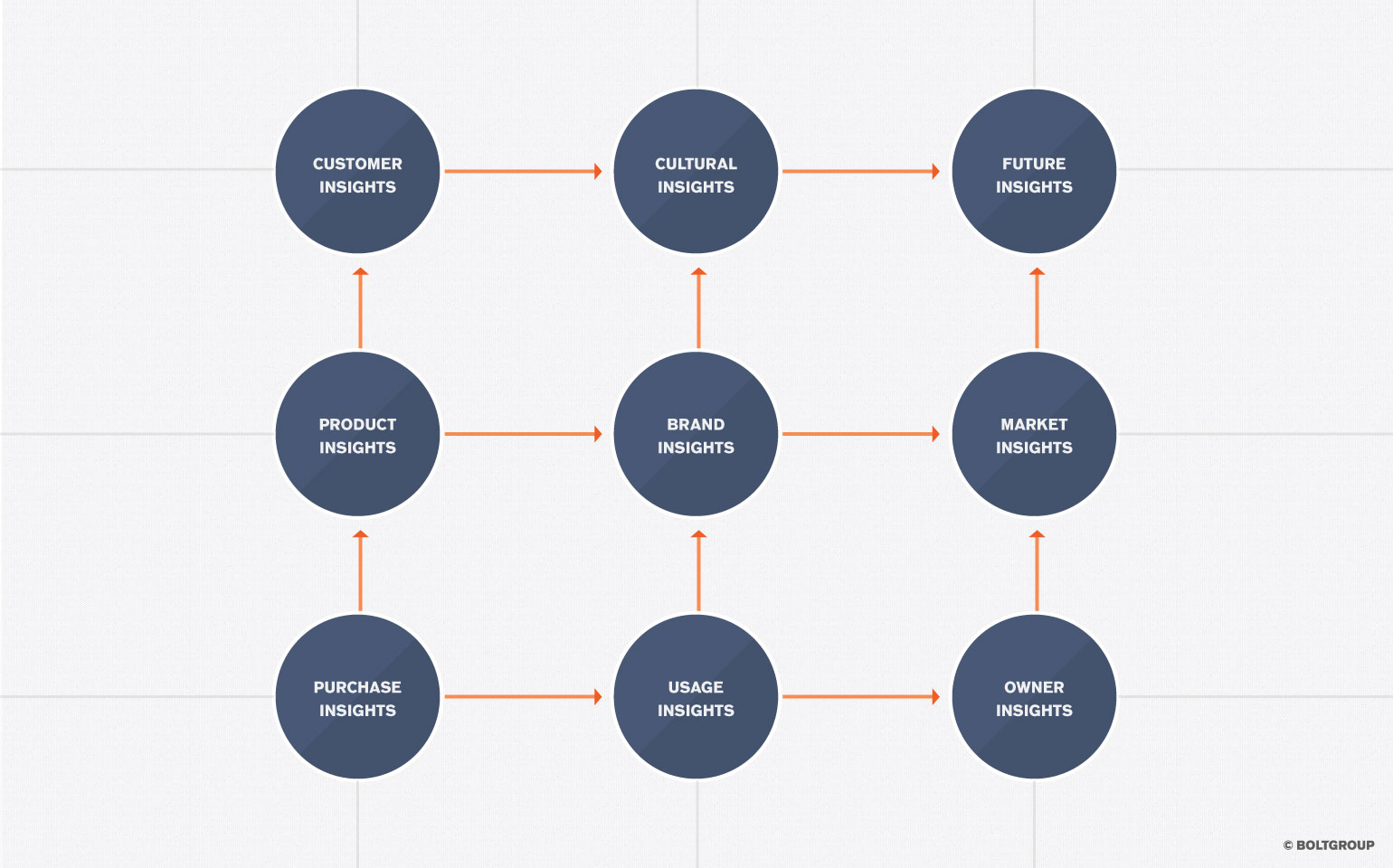Over the last year our intrepid research teams have traveled some 10,000 miles, across multiple continents, observing and videotaping people for ethnographic research. Our ultimate goal is the creation of meaningful innovation and compelling design for our clients. From computer electronics to backyard lighting, from ketchup dispensers to bathroom fans—this research informs our design process and leads to products and brands that people love. But the primary target of our research, the nuggets of gold we dig for, are insights. The word “insight” is ubiquitous in the innovation business these days, but the meaning of the word has become watered down. Time was when an insight was defined as any deep, intuitive, accurate understanding. As I watched my kids mature, occasionally I had insights about their behavior and motivations that helped me be a better parent (I hope). Reading a few novels by the same author reveals insight into the author’s personal values. And surely the earliest humans gained all sorts of insights that enabled their survival, and still shape our DNA today. Insights like these are helpful, but they have little to do with innovation and “unmet consumer needs”…or do they?
Nowadays “insights” evidently means something different. Insights have been roped into the innovation bandwagon. The term “Consumer Insights” has replaced “Market Research” in many corporate toolboxes. The elusive insight is heralded as the key to innovation, the basis of corporate marketing and development. Capturing these wily beasts, and growing them into products and brands, is fundamental to the user-centered design process.
But just what is an innovation insight? And how do you know when you’ve got one?
Insights Defined
Cristina Quinones, a consumer insights researcher at the Pontifical Catholic University of Peru, lists nine types of insights: Customer, Cultural, Future, Product, Brand, Market, Purchase, Usage, and Owner Insights. Her list speaks to the fact that insights for innovation may vary depending on their context.
Kraft Foods marketers say that an insight is a discovery that “keeps the consumer at the center of the decision-making process.” The people at General Mills are even more mercantile, saying simply, “Insights are something you know that your competitors don’t.” But I think insights go deeper than these statements would imply.
Over many years of design thinking and gathering insights for innovation, I’ve collected dozens of “insight” definitions. These are my seven favorites:
- Moving a subconscious motivation to a level of consciousness.
- Recognition of a person’s aspiration, their current situation, and the gap between the two.
- Discerning the significance and meaning behind a particular human behavior…spotting the moment that presents a revelation.
- The discovery of a truth that suggests a hidden need.
- An understanding that forces you to see your product, brand, or market in a fresh and unexpected way.
- Uncovering a shared meaning, a shared value, or a shared need that can be translated into action.
- Aha! K-Ching! Discerning an underlying consumer motivation that drives behavior … and leads to innovation and value.
Insights Recognized
How do you know when you’ve got an insight? How do you filter through data to separate the wheat from the chaff? Too often we reject potential insights because they seem obvious. Carol Phillips, at the University of Notre Dame, created a helpful list for recognizing insights. Before rejecting a potential insight, she suggests we first ask these five questions:
- Does it reveal something about the consumer (not just about the product or service)?
- Does it capture how consumers want to feel (not just what they think)?
- Does it relate to the drivers of the category (not just a particular brand)?
- Does it speak to an enduring value (not just to what’s new)?
- Does it challenge the company or brand to act in new ways (not just maintain the status quo)?
Has the innovation business really changed the meaning of “insight?” Maybe not. Insights come from observing human behavior, just like me watching my kids. And, like the revelation of a novelist’s personal values, insights are about revealing the shared values of a group. Like those of our earliest ancestors, the insights we uncover today point to innovations that help us grow, prosper…and survive.
